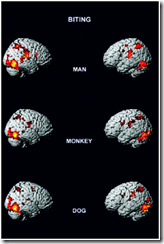|
Remember the coyote spotting this year in February? To refresh your memory, refer to the BWOG post http://bwog.com/2010/02/07/cage-match/.
Apparently, many other urban areas have been facing the same problem. In the last century. coyotes have been migrating from prairies to the west and east coast. Residents of large cities such as Los Angeles and New York have had numerous encounters with these wolf-dog hybrids. The key to their success, according to wildlife biologist Stephen DeStefano, is versatility. Coyotes have a varied diet consisting of berries, fruits, small mammals, and even garbage. They are skilled at avoiding humans so maybe there are many more canines living among us than we suspect. For more info about these canine ninjas, check out today’s New York Times article http://www.nytimes.com/2010/09/28/science/28coyotes.html?pagewanted=1&ref=science. ~HW
0 Comments
Can you say trendy tech? BMW released a prototype of their new Mini Scooter E, an electric scooter that can be powered by a domestic power outlet and that is activated with a smartphone during this year’s London Fashion Week. The smartphone “key” – once attached to the Mini Scooter E – serves as the “display and control mechanism.”
With a chainless bicycle (using steel wires instead of the conventional bike chain) unveiled last week as well, this writer at Spread Science is excited for all of the innovative twists on traditional modes of transportation in recent times. Check out Popsci for more details. –GB There’s a really cool paper by Giacomo Rizzolatti and Laila Craighero that explains that the same neurons will fire regardless of whether you are watching an activity or doing it. These “mirror neuron[s are] formed by two main regions: the rostral part of the inferior parietal lobule and the ventral premotor cortex”. This is observed regardless of whether the activity is seen, hear or thought of. However, only a small part of the mirror neurons fire when a sound attached to an action (“e.g., ripping a piece of paper”).
This is really important in the learning process; it “transforms visual information into knowledge”. Without having someone physically moved into position, people can have the “computer program” for the action downloaded by oberservation. In fact, one gets to feel the action. Baldissera et al. (2001) found that a flexor and extensor reflex occurred when observing someone opening and closing a hand. In other words, the exact muscles that needed to be used in opening and closing the hand where “pinged”. The epic part is that this works between species, if we see any animal eat, our mirror neurons for eating will fire. However, the action must not be unique a species; “observation of barking did not produce any frontal lobe activation”. Finally, , the coolest part of Mirror-Neurons is that “listening to sentences describing actions engages visuo-motor circuits subserving action representation”. So, if I where to say jump, the neurons involved in jumping would fire. If you entered the Google search engine webpage today, you should see a representation of buckyball instead of the usual second “O.”
What Is Buckyball? Buckyball – scientifically known as Buckminsterfullerene (C60) – is a hollow, spherical carbon structures of the fullerene family, which consist of linked pentagonal or heptagonal ring-based carbon structures. Buckyball contain links of twelve pentagonal rings, two of which never share the same side, and twenty hexagonal rings. Buckyball resembles a soccer ball and is known for being the “roundest of round molecules.” Their amazing degree of rotundity contribute to their resistance to high speed collisions. To put that in perspective, buckyball “can withstand slamming into a stainless steel plate at 15,000 mph, merely bouncing back, unharmed.” How Was Buckyball discovered? Twenty-five years ago, buckyball was discovered by chemists R.E. Smalley and H.F. Kroto, and their graduate students. Smalley, Kroto, and their assistants were studying carbon-based interstellar materials with spectroscopy. They were already aware of long carbon chains in space. However, they did find that buckyballs in space had the same basic properties as those of buckyballs on Earth. If you would like to read more about the specific lab techniques used to measure buckyball, please click here. -GTB |
Categories
All
Archives
April 2024
|


